Timeline is a feature that allows users to review their activity history and quickly return to their previous tasks. It shows a list of your recently used apps, documents and web pages. With the help of Cortana, your activities from all devices running under the same Microsoft Account can also be shown! Here is how to use this feature.
Advertisеment
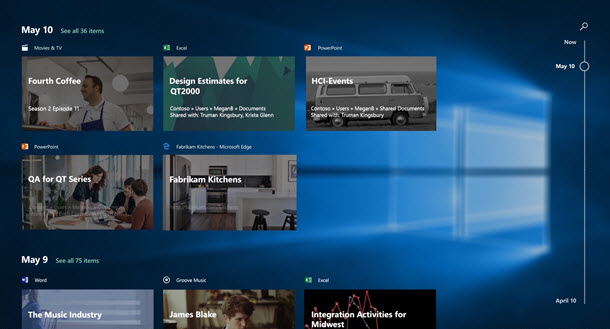
Microsoft made Timeline available to the public with Windows 10 build 17063 of the Redstone 4 branch. According to the press release, the company is thinking of simplifying how you can get back to stuff you were working on in the past. The user can easily forget which site or app he was using or where he saved a file. Timeline is a new tool which will allow the user to get right back to where he left off. Here is how to use it.
How to Enable Timeline in Windows 10
To make Timeline available, the following options should be enabled.
- Collect Activities.
- Filter activities from accounts.
To enable Timeline in Windows 10, do the following.
- Open Settings.
- Go to Privacy - Activity History.
- Enable "Filter activities for your Microsoft Account".
- Enable the option Collect Activities.
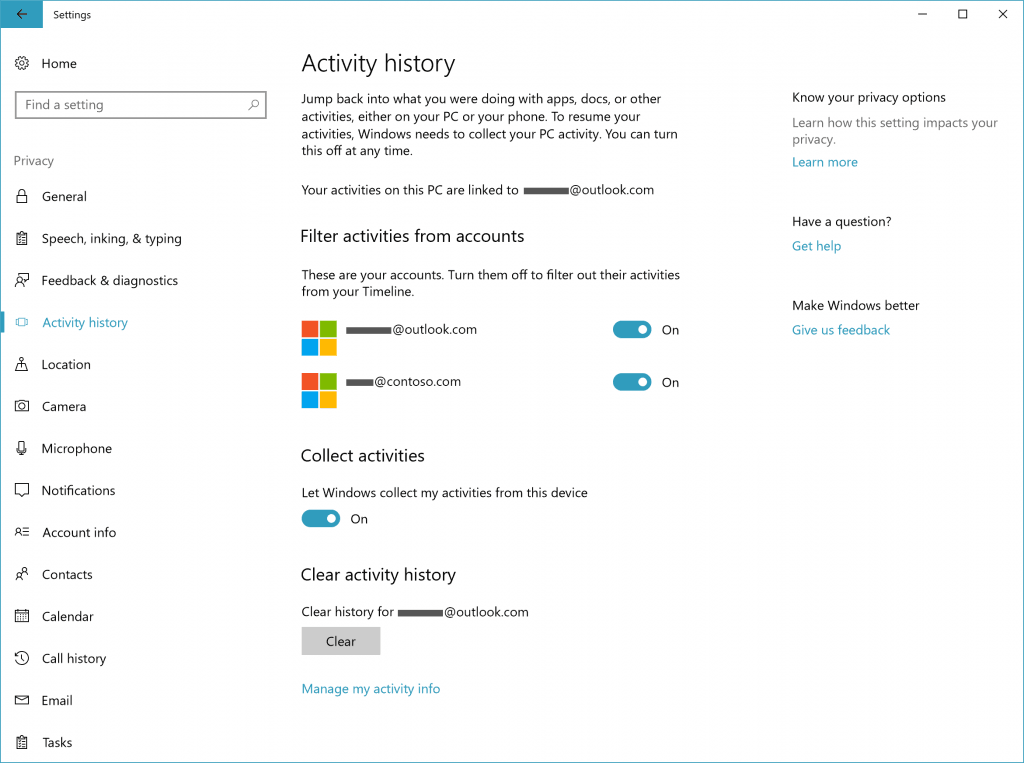
Settings app also lets you disable activity collection and clear your activity history.
How to Open Timeline in Windows 10
- Click or tap on the Task View icon on the taskbar. Alternatively, press the Win + Tab keys.
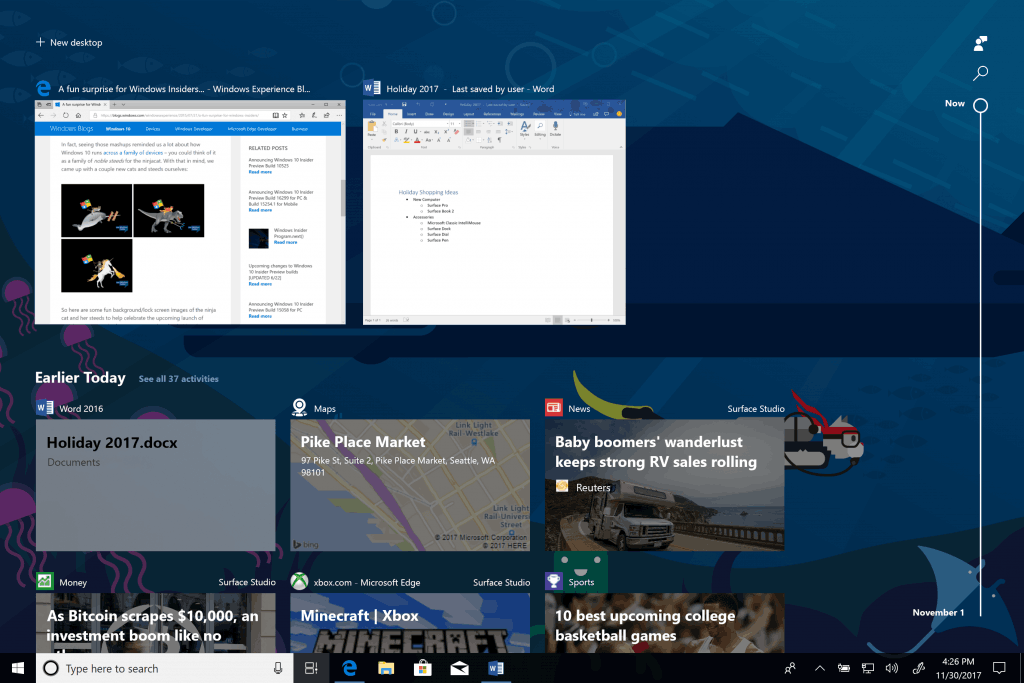
- If you have multiple displays, pressing the Win + Tab keys will show Timeline on the primary display.
- However, if you click on the Task View icon, it will appear on the display on which the Task View icon was clicked! Keep this in mind.
How to Use Timeline in Windows 10
Timeline introduces a new way to resume past activities that you started on this PC, other Windows PCs, and iOS/Android devices. Timeline enhances Task View, allowing you to switch between currently running apps and past activities.
The default view of Timeline shows snapshots of the most relevant activities from earlier in the day or a specific past date. A new annotated scrollbar makes it easy to get back to past activities.

There’s also a way to see all the activities that happened in a single day. You need to click the See all link next to the date header. Your activities will be organized into groups by hour to help you find tasks you know you worked on that morning, or whenever.
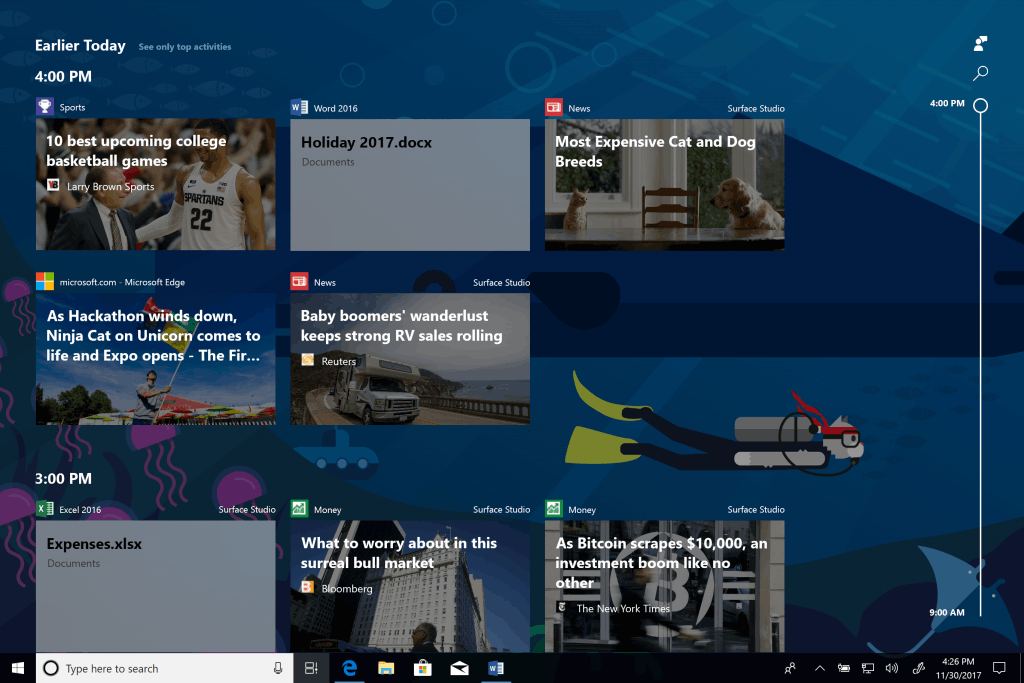
Click on the See only top activities link next to the day's header to restore the default view of Timeline.
If you can’t find the activity you’re looking for in the default view, search for it. There is a search box in the upper-right corner of Timeline if you can't easily locate the task you wish to restore.
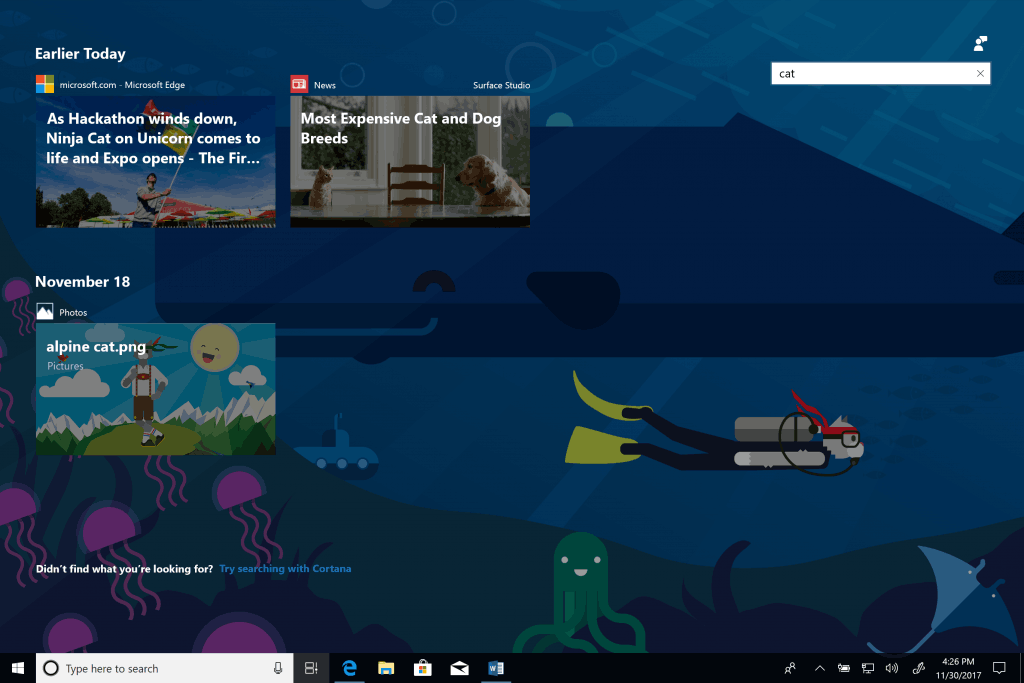
That's it.
Support us
Winaero greatly relies on your support. You can help the site keep bringing you interesting and useful content and software by using these options:

Does it show all apps i was working during two or three days?
I mean, if i worked with text document in Word, then finished it and closed word.
Will it still show it in Timeline?
Yep, it should appear in the timeline list.
Timeline fails to work across devices. It is supposed to keep copies of each instance in the cloud, but instead, when I work on a doc on my desktop, and later try to open it on my SP4, it tells me that it can’t find the directory, or that the directory does not exist. If it saves all copies to the cloud, then WHY IS IT LOOKING FOR IT IN THE DIRECTORY OF MY DESKTOP COMPUTER???????? This is moronic! A complete failure on M$ part, to take what would be a great feature, and complete screw it up, as M$ usually does.